Cape Town Table Mountain
Discover All it's Best Highlights
Cape
Town Table Mountain will not be hard to
miss once you're in Cape Town. Take time
to discover Table Mountain and it's great
surroundings.
This impressive tour combines the best
that Cape Town has to offer immediately
around the Cape Town Table Mountain. Highlights
include the City Bowl, Signal Hill or
Table Mountain (weather depending), Camp’s
Bay, Twelve Apostles, Hout Bay, Kirstenbosch
Botanical Gardens. There is so much to
see on this Cape Town tour.
CAPE TOWN TABLE MOUNTAIN TOUR
DETAILS
Distance: 104 km / 65 miles
Duration: Full day
Best time: All year
Included: Certified driver/guide, a/c vehicle and gasoline
Excluded: Entrance fees to Table Mountain, Robben Island, Seal Island ferry, Kirstenbosch, lunch, drinks
Price: R 1400.00 pp for 2 persons per day, R950.00 pp for 3 persons per day, R750.00 pp 4+ persons per day.
Approximate entrance fees: Table Mountain - R330.00 adult, R165.00 children 2 - 17 yrs; Robben Island - R360 adult, R206.00 children 4 -17 yrs; Seal Island Ferry - R80 adult, R45.00 children; Kirstenbosch R70.00, R20.00 children 6 - 17 yrs
Note: All tours can be customized
 Inquire
about the Cape Town Table Mountain
Tour
Inquire
about the Cape Town Table Mountain
Tour
-
Cape Town Table Mountain Tour -
 1.
CITY BOWL
1.
CITY BOWL
Just below Cape Town Table Mountain lies
Cape Town’s city centre. It lies cradled
in a vast blue-grey amphitheatre formed
by Table Mountain, Lion’s Head and Devil’s
Peak. This conglomeration of Dutch and
Victorian architecture, interspersed with
modern wonders of glass and concrete,
is the heart of Cape Town and on either
side of Adderley Street is an eclectic
array of sightseeing highlights and urban
attractions that endowed the Mother City
with its unique flavour.
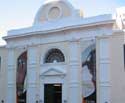 2.
CAPE TOWN SLAVE LODGE
2.
CAPE TOWN SLAVE LODGE
Louis Thibault, the noted French architect,
designed certain sections of the original
Dutch East Company (VOC) Slave Lodge.
Today it serves as the Cultural History
Museum and provides visitors with some
insight into just a few of the peoples
who lived at the Cape during the period
of the early settlement.
 3.
CAPE TOWN COMPANY GARDENS
3.
CAPE TOWN COMPANY GARDENS
The Company’s Garden was originally laid
out in 1652 by Jan van Riebeeck and his
gardener, Hendrik Boom, as a vegetable
garden to provide fresh supplies to the
ships of the Dutch East India Company
when they called at the Cape. Today, the
Botanical Gardens are home to magnificent
stands of both indigenous and exotic vegetation.
It lies at the foot of Cape Town Table
Mountain.
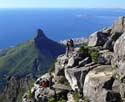 4.
SIGNAL HILL
4.
SIGNAL HILL
Signal Hill is a mountainous knoll that
divides the City from Sea Point and beyond.
From here you have a excellent view across
exclusive residential suburbs such as
Bantry Bay and Green Point, the V&A Waterfront,
Cape Town's Table Mountain and Robben
Island. Sundowners can be enjoyed whilst
experiencing spectacular sunsets. Signal
Hill also houses the Noon Gun.
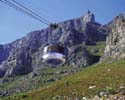 5.
Cape Town TABLE MOUNTAIN
5.
Cape Town TABLE MOUNTAIN
(GOING UP IS OPTIONAL)
Cape Town's Table Mountain can be spotted
from as far as 200 kilometers out at sea.
It is flanked by Devil’s Peak and Lion’s
Head and is the country’s most familiar
landmark. Table Mountain towers 1 086
metres above sea level and its impressive
hulk consists out of shale, sandstone
and granite. The new cable car departs
from the lower cable station and takes
five minutes to complete the trip to the
summit. It takes as much as 65 people
at a time, and operates virtually throughout
the year- depending on Cape Town’s weather
conditions. Table Mountain, with its spectacular
assortment of vegetation, forms part of
the Cape Floral kingdom.
 6.
CAMPS BAY
6.
CAMPS BAY
Camps Bay lies at the foot of the Twelve
Apostles and embraces a palm-fringed expanse
of pristine white sand which looks as
if it has come straight out of a Caribbean
holiday brochure. Camps Bay is a lively,
stylish place. Paragliders glide from
Cape Town Table Mountain and touch down
on the beach. Holiday makers picnic on
the grassy margins, while children cavort
in the tidal pools. Camps Bay is one of
Cape Town’s finest dining locations. Beautiful
sunsets can be enjoyed here in Camps Bay.
 7.
LLUNDUDNO
7.
LLUNDUDNO
Llundudno is a sought-after residential
enclave where luxury homes line the slopes
of the Karbonkelberg. Massive granite
boulders shelter Llundudno’s fine sandy
beach and residential area. One can relax
here on a perfect hot day. Some shipwrecks
occurred off the shore of Llundudno. Sandy
Bay, further along, is perhaps one of
the Cape’s most famous nude beaches.
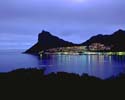 8.
HOUT BAY
8.
HOUT BAY
The name “Hout Bay” comes from the Dutch
and Afrikaans word for timber, for the
valley was a source of wood during the
early days of the Cape Colony. Despite
rapid expansion in recent years, the fishing
village (Hout Bay) remains relatively
unscathed by modern development and maintains
a decidedly rural atmosphere. Hout Bay
is renowned throughout the country for
its fresh fish and seafood.
 9.
SEAL ISLAND TRIP (OPTIONAL)
9.
SEAL ISLAND TRIP (OPTIONAL)
A trip to Duiker Island can be undertaken
with one of the ferries operating out
of Hout Bay harbour. It is the breeding
ground for both the Cape fur seal and
many species of seabirds. The seals are
hunted by the great white shark. Sometimes,
on a trip like this, one can enjoy the
view of a whale when they visit our shores.
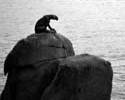 10.
STATUE OF THE LEOPARD
10.
STATUE OF THE LEOPARD
The statue of the leopard is one of the
two guardians over Hout Bay and graces
the eastern coast of the bay. The last
living leopard was seen during 1935. Being
one of the wild animals to roam the mountains,
the leopard is representing them all.
 11.
GROOT CONSTANTIA
11.
GROOT CONSTANTIA
On the backside of Cape Town Table Mountain
lies Constantia. It was founded by Simon
van der Stel in 1685. The magnificent
Groot Constantia houses the country’s
oldest manor house and is also the oldest
wine estate still producing fine wine.
Cellar tours and wine tasting can be enjoyed.
Jonkershuis offers typical Cape dishes
and Taphuis serves light meals and pub
lunches. The surrounding grounds offer
splendid views of the wineland, and ideal
for relaxing picnic lunches.
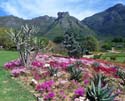 12.
KIRSTENBOSCH BOTANICAL GARDENS
12.
KIRSTENBOSCH BOTANICAL GARDENS
The National Botanical Gardens at Kistenbosch
is one of the world’s great botanical
institutions and lies in the shade of
the eastern slopes of Cape Town Table
Mountain. The gardens were formally established
in 1913. The landscape includes nearly
7 000 species of indigenous plants. Van
Riebeeck’s hedge of wild almonds planted
in 1960, the magnificent Camphor Walk
and the “Braille Trail” (which leads blind
visitors through an indigenous herb garden),
needs special mentioning.
 13.
RHODES MEMORIAL
13.
RHODES MEMORIAL
Rhodes Memorial, temple-like, was constructed
in 1912 from Table Mountain granite. At
the foot of the monument’s stone steps,
which are guarded by eight massive bronze
lions, stands an impressive equestrian
statue. Magnificent views of the city
and the immediate suburbs below can be
enjoyed. Afternoon tea can be enjoyed
in a charming old stone cottage that serves
as a restaurant.
 14.
ROBBEN ISLAND (OPTIONAL)
14.
ROBBEN ISLAND (OPTIONAL)
A highlight of a day in the V&A Waterfront
will definitely be a visit to Robben Island
and it can only be done by an official
tour. Robben Island is 11,5 kilometres
(7 miles) away from the main land. A tour
lasts three-and-a-half hours (including
the boat rides to and from). The fee includes
a comprehensive tour of the political
prison and a bus-ride; which takes visitors
to various sites across the island. Former
president Nelson Mandela was its most
famous inmate during the days of apartheid.
You can take beautiful pictures of the
Cape Town Table Mountain from Robben Island.
for
more possibilities Top
14 - Cape Town tour recommendations